To Nausicaa, “a life is a life, no matter how small,” and “regardless of how it came into being,” and this is shown through her utter devotion to seemingly every life form, from the insects of the forest to the mold to nearly all factions of humanity. She is one who came from the Valley of the Wind, who wears the clothes of a Dorok, stained blue with the blood of the Ohmu, fighting with the Torumekians against a future crafted by old humanity, and in this sense, she serves to be a great connector within the series. Specifically, the series questions the impact of human intervention in nature, in how the entire ecosystem of the Sea of Corruption was manufactured by human hands in order to cleanse the pollution in the air and restore the environment close to its original state. However, in the series, creatures are shown to “transcend” their original intentions, the “Ohmu” which were merely intended to be the foundation for the Sea of Corruption, acquired their own intelligence and discovered their role in “how” they are supposed to do this, warning Nausicaa about needing to help the forest various times throughout the series. “Ohma” as well, serves to transcend his original purpose, initially being bred for destruction, with Nausicaa’s intervention of being “named” and such, acquires his own personality, a higher sense of intelligence, and finally becoming a “fine person,” in the end. He demonstrates his intelligence in outsmarting the Torumekian units when Nausicaa is held inside, pretending to follow order, but in actuality, keeping close eyes on her and also in gaining control of himself in not attacking everything in sight. Ohma had become “more” than what he was intended to be, an arbitrator, warrior, judge, and a fine person. In a similar way, the “modified humans” become more than what they were intended to be, tools in order to restore humanity when the world would return to its original state. “Because no matter how much knowledge and technology you have, you will still need slaves to do the work for you the morning you replace our world.” Nausicaa serves to transcend this intention by going against the plans of the Crypt and eventually destroying it. Similarly, can even be said about how Miyazaki himself wrote the story of Nausicaa. He proceeded to write the story with no real outline. There was nowhere he intended it to go, just a valley, a girl and the threat of war in the beginning. However, as more and more of the story came about, the scope of the series expanded greatly, touched upon ideals he never would have expected and changed his entire philosophies towards life as a whole. In other words, the story of Nausicaa, intended to be a story, became so much more than a story evolving into a sweeping epic, influencing the life of the author and people to come. Nausicaa remarks, “that is for this planet to decide,” in response to the Crypt suggesting that her approach is “nihilism” and “nothingness,” and this implies that Nausicaa still believes that new humanity can “transcend” its original purpose of being tools to revive old humanity and either cope with the fact that their time is finite, or naturally find a method of prolonging their existence.
With the rejection of Crypt, Nausicaa opposes the ideal of a pre-determined future and instead embraces humanity’s capacity to change. “Live survives by the power of life. To live is to change, but you cannot change. You only have the plan built into you because you deny death. Speak the truth! We have no need for you.” Here we see the rejection of the Crypt’s plan to create a “utopia,” as it cannot “transcend” its intention. Living in a utopia would cause humanity to remain “static” and “unchanging” because when everyone is completely satisfied, there will be no change. Even if the world will eventually collapse in the long run, and extinction will arise, Nausicaa emphasizes the importance of “the struggle of changing in itself,” in how, against meaninglessness, with “no light at the end of the tunnel,” the act of still “trying” is admirable in itself. If “death” is perceived as meaningless in how a person dies forever, only to never touch upon the earth again, then creating a utopia where everything is stagnant, unchanging due to satisfaction can be seen as equally meaningless. A future of change is preferable to a future of no change, even if the change is technically meaningless in itself. Also comes the ignorance of another entire generation of people trying to project their own ideals onto future circumstances taking on the disguise of “hope.” This is essentially weighing of the world of “old humanity” against the world of “modified humanity,” and Nausicaa refuses to allow her people to simply “slave away” and go along with their plan. Doing such would serve to “dehumanize” the new humanity, being merely “tools” acting in accordance to what they were created to do. The Crypt was developed as a sort of “reset button” on the world to restore it to its original state, but Nausicaa recognizes how the life that was created by the old humans had “transcended” its original intentions. The plan may have been to gradually purify the air, but doing so ignores the life that the “modified” humans had taken on. Live had evolved in an unpredictable way, and she feels that the original humans do not have the right to destroy it. In essence, she refuses to be controlled. The reconstruction of the world disregards their ability to think, their ability to act and change themselves, all components of what makes them human. In essence, this can be seen as an attack from old humanity onto new humanity, calling them “less than human,” slaves who slave away for “real humanity.” Nausicaa states that, “if the Crypt is light, then people do not need light.” People define themselves, “we can know the beauty and cruelty of the world without the help of a giant tomb and its servants,” and in fact, the majority of new humanity exists without the knowledge of the Crypt. This serves to strengthen how its intervention is not needed in the world, and humanity can live on its own, for themselves.
Nausicaa plays upon the necessity to have both “purity” and “corruption” in the world. If merely purity existed, then everything would be pure and if only corruption existed, then everything would be corrupt. The idea of having both provides an entire “spectrum” to be felt. It kind of goes along the lines of how, “in order to experience highs, you need to experience lows.” Having corruption along with purity gives purity something to compare itself to. The same can be said about “good” and “evil” as vague as the terms are. They can be twisted to fit different perspectives depending on the person as what is “good” in someone’s eyes may be “evil” to another. In this case, Nausicaa and the “modified” people need both. They “reach out” towards a “pure” world as something they want to reach one day and this provides a sense of “hope” and “motivation” for them. It is what they are aiming for and want to achieve. However, at the same time, they cannot live without the corruption of the world. They perceive the “purity,” as “miasma” in the series when it in fact is pure air of the original world. Inside, they are the ones who are actually corrupt even if they do not actually know it. In short, the corruption is an undeniable part of them and they cannot live without it. The people of the Valley of the Wind need to let water sit outside so it can become “polluted enough” for them to drink. They perceive “pure air” as “corruption” and “polluted air” as “pure,” and this calls into question whether all can simply be twisted in this way. Just like in the physical sense of not being able to live without the “corruption,” living without rage, sorrow and suffering, as later explained more, cuts off an entire spectrum of emotions which are part of what makes someone human. As emotions are part of what defines a person, their removal would also equate to losing part of one self. Even if a complete world in which everyone is happy and everything seems great, this does not eliminate corruption as human beings, no matter where they are, are still “capable of corruption.” Being in a utopia does not mean that people do not have the ability to harm one another. Nausicaa herself demonstrates this in the beginning of the first volume where she completely snaps and almost sadistically enjoys dueling an invading Torumekian in protecting the Valley of the Wind. Nausicaa herself, even though she vows to want to protect and preserve life and is “pure” in her ideals, is still capable of violent acts. She, who is hailed as a Messiah, is still corrupt to the core. Killing off the old human race may be deemed ideal in the eyes of her and the modified humans because it can call for their own individual existence without reliance on the Crypt, but for the citizens of the Crypt, it can be seen as an act of complete genocide. In regards to the new humans, eventually everyone will die due to the “Sea of Corruption” cleaning out the polluted air, because their lungs cannot handle it, but also because humanity itself cannot tolerate “pure purity.” Therefore, both “purity” and “corruption” are essential facets of humanity and rather than eliminating one or the other, humanity must come to terms to facilitating the two, accepting that everyone still maintains the ability to suffer and cause others to suffer. Pure good and pure evil cannot exist.
Nausicaa is almost lured into the “utopia” which the forest people propose when she discovers how humans can actually interact and survive in the Sea of Corruption if they truly tried. For her, it would seem to be a paradise, but in succeeding to it, she would be taking the “easy way out,” in a sense, escapism, leaving everyone behind. The forest people adapted to live in the forest in exchange for giving up “human civilization.” They abandoned fire and a lot of what people value for the sake of mere co-existence. This calls into question of whether human achievement holds any worth on its own in the first place. Would it be worth it to simply abandon it in order to keep on living? Isn’t part of what keeps people living, said achievements of the human race and internal desire to continuously build on to them and acquire more and more? Is there any meaning to progression and existing at all? If our achievements are essential to convince the human race to keep on living, then how would it be to throw all of those achievements out the window in order to simply exist. Without these achievements, it would seem that people would lack reason to exist as they take such pride in them, but then again, do people even need a reason to live? Another instance of the rejection of utopia is with the garden, in which the place is essentially a literal paradise. However, despite how “nice” it is, acceptance of such would mean that Nausicaa would leave everything and everyone behind. She gives up her own self-satisfaction to live in a world of chaos and violence. She is “grounded” in the sense that not everyone can adapt to live in the forest, and even in a utopia, “suffering” still serves to exist. It is something that can never be fully removed from humanity no matter how hard one wishes it to be because it is something that makes people “human” in the first place. More is shown through the rejection of the third utopia, offered by Crypt, in which once again the idea that humanity will be able to exist eternally in an absolutely pure world once the Sea of Corruption’s role is complete. Here Nausicaa rejects the Crypt in order to preserve “life” in its fullest. A complete escape from death, suffering and tragedy is a complete denial of what makes humanity human. Suffering, pain and sorrow are key elements of what it means to live and cutting these off means limiting the full spectrum of life. Removing these would mean only living “part of life,” instead of living life in its fullest. At one point, the Crypt also offers technologies which could allow the modified humans to live in a purified world. The deal does not seem that bad until you realize what the Crypt is actually offering, living and living and living forever, through its detestable products, immortal Heedra bodies as with Namulith and grotesque states of those who reside within the Crypt. It is certainly not the “bright” and “happy” offer one imagines it to be. It is an inorganic freak show, insult to life itself, which is also part of why Nausicaa rejects the Crypt’s offer. She believes that an organic life in which both “life” and “death” in their entirety can be felt, is most suitable for the human race to live. When she states that, “all born from the darkness returns to the darkness,” she means that life and death must make full circle, people should not try to live forever in an impossible utopia that is only the “illusion” of a utopia.
The series seems to come to understand how revenge and hatred is cyclical and by committing acts of violence against another for the sake of revenge only provides another reason for someone else to take revenge against the aggressor. If left to continue, this cycle will simply repeat until either, someone finally decides to back out of it, or everyone dies and there is nobody left to continue the cycle. Kushana is initially motivated to kill her siblings whom she bears great resentment towards and gets angered when she encounters them in the Dorok War. When he is killed by the insects, she feels that she has “lost something” inside. This was due to revenge being a large motivating factor for her, growing up in what she describes as a, “nest of vipers” family members out to kill one another and naturally, she is furious with this. While Nausicaa takes the “pacifist” route, attempting to initially stop war and violence, Kushana takes on the “genocide” route a path of blood, forcefully removing anything in her way. However, paths of each come to intersect at a point as Kushana’s path of redemption comes to a close when Yupa sacrifices himself for her sake, defending her from a Dorok attack. Yupa is key in providing a way out of the cycle and causes the two factions, the Doroks and Torumekians, to grow just a little bit closer to one another. Yupa says that, “the blood has not sullied you, but cleansed you,” which could mean that Kushana has “learned” from this cycle of revenge. She recognizes what it leads to, in the end, nothing, which is a step towards not repeating it. This can tie in with the human ability to “change” and Nausicaa’s statements on how “if humanity were a little smarter,” in how it people “do” have the ability to learn from their mistakes. Human nature may be cyclical, but this does not mean that people cannot take individual action, they CAN learn from their mistakes and they CAN change what they do and plan to do. Anyhow, in this case, what Kushana has gained is “knowledge,” the “recognition of the cycle” in how it functions.
Nausicaa recognizes how people continue to repeat themselves and such is shown through the course of action of the Dorok emperor. Miralupa, was initially a ruler wanted the best for his people, but after discovering the “humanity” of his people, in how they were “imperfect,” continuing to fight amongst one another and refusing to “wise up,” he gradually transforms into a cold-hearted ruthless ruler, feared by everyone. The Master of the Garden proceeds in telling his story to Nausicaa in how he had once visited the garden before, taking Heedra saying that he wanted to, “save humanity.” Nausicaa, is then put in a rather similar position as she is no different than the Dorok emperor, potentially repeating his actions by sticking to her beliefs. She recognizes how human behavior repeats itself and the only method of escape is to acknowledge mistakes and change things up. Similarly, the “repetitive nature of humanity,” can be seen in Namulith’s reactions to Nausicaa. He had witnessed his younger brother in his attempt to “save humanity,” and recognizes the futility of it all. The progresses and act of even trying and living is useless to him. Due to everything being useless to him, Namulith proceeds with his reign by “livening things up” in seeking ecstasy by causing chaos. If everything holds no meaning, the thing he can do is simply “enjoy,” caring nothing about the consequences of harming people since the consequences do not matter in the first place. In short, he just does not care, “living in the moment” being of most significance from his perspective. Similar to Miralupa, Namulith had extended his lifespan by undergoing multiple surgeries. Miralupa, who was too afraid of attempting surgery to try, instead resorted to attachments in his body, and bathing chemicals constantly to merely keep himself alive. In a similar manner, when inside her inner forest, Nausicaa discovers the “original” world, the end result of the Sea of Corruption, and is reminded of how amazingly beautiful the world truly is. However, she also recognizes the “cyclical nature” of human behavior, of how the world should be left “untouched” by human hands. She recognizes that if humans were let back into said old world, they would eventually come to polluting it and exploiting it for resources. Eventually, the world may end up as polluted as it was at the end of the Seven Days of Fire. It would be unwise to allow humanity back into such a world at the present. However, she also recognizes that if humanity were to become, “a little smarter,” then maybe they will be able to co-exist with such a world without wrecking it. From this we can see that Nausicaa still, “believes” that change is possible, further supported in the instance of Crypt where she remarks how “to live is to change.” The way to break out of this cycle of repetitive human nature is to “do something different,” therefore not being repetitive.
From the Crypt, it is said that technology can be provided in order to allow new humanity to “adapt” back and survive in a world of old humanity where the pollution is gone. Naturally, new humanity requires this pollution to survive, but Nausicaa’s rejection of this proposal serves to restore “true death.” Nausicaa now knows the cyclical nature of human behavior, generations holding similar ideals, going about them and failing to learn from their mistakes, or even in some cases learning, but failing to apply such. Letting old humanity slide in polluting the world and giving them a second chance by reviving them would continue the cycle in the pollution of the original world once again, leading again to potentially another act of desperation to preserve the species as seen with Crypt. In turn, this would spark another revival in which humanity is given another chance, only to pollute the world once again. Nausicaa “learns” here and puts an end to it all, giving no second chances to old humanity. Nausicaa, a “preserver of life,” can be seen here, essentially destroying the entirety of the human race and the “hope” spawned from the Crypt, all for the sake of actually “preserving life.” What does it mean to “preserve life?” Part of life is to “live” and part of life is to “die,” and Nausicaa recognizes this in volume six. Cutting out the “dying” part would allow humanity to exist, almost as an immortal entity, similar mistakes being made by Miralupa, in his constant attempts to escape death. It was to the point where his body was so dilapidated, that there was no significance in him even living anymore. This calls into question, “do people even need to live forever?” The natural instinct to live is present, but immortality in “forever” really is “forever,” as in, never dying no matter what happens. Living forever turns life itself into an eternal prison and death can actually be seen as a “savior” allowing people to not have to suffer any longer. In this sense, Nausicaa can be seen as both a “hero” and a “monster,” killing off humanity in a technical sense, but at the same time, “preserving” humanity in its fullest by allowing the species to experience the full spectrum of both life and death. It plays into the “acceptance of death,” in how death is a natural part of life and how what is to be done is not “remove” it, but rather come to terms with it. Humanity is mortal and the species must come to accept that.
Nausicaa learns of the truth, yet is unable to allow others to follow in her footsteps. With the destruction of the Crypt, potentially the only individuals who may know of the world’s secrets are Nausicaa herself, Selm and the Master of the Garden. The act of “concealing the truth” serves to provide hope and security for the people. The real truth is far too harsh to bear so “living within a lie” serves to be the way to cope with it. Nausicaa, in essence, conceals the truth for the sake of humanity, so that people will not panic upon learning that the world will eventually end and everyone will die due to the inability to handle the purity of the world. Keeping everyone in the darkness, and out the matter, allows everyone to go about their everyday lives, without worrying about the bigger picture. This is just as to how the world works in actuality, not everybody engages in deep, philosophical thought and discussion and some just go about living their lives based on what comes to them, not giving a second thought to things “below the surface,” and the “bigger picture” relating to the fate of the world. The real world too, will eventually be destroyed with the destruction of the sun and eventually the galaxy and potentially the universe. Our fate is sealed, yet because many people to not think about these things on a regular basis, they are still able to enjoy their lives in a sense that is considered, “normal.” Goals, ambitions, and everyday encounters serve as things to convince people to keep on living, and to distract them from this bigger picture which Nausicaa keeps concealed as for otherwise, how will people go about living? The question is whether one wants to hear the “truth” or simply the “answer one wants to hear.” The “truth” in this case is not “the answer the new humans want to hear,” and for their sake, Nausicaa “provides them with the answer they want to hear,” which is none of it at all. Hearing none of it, she bars off the “truth” from them, but allows them to potentially live more satisfied than if they had heard the truth.
Nausicaa as a whole remains rather open-ended, and Nausicaa herself admits even admits to not knowing whether what she did was “right” or not. At one point, she remarks, “for all I know, I could be going to destroy humanity,” the “for all I know,” demonstrating her cognitive dissonance concerning her actions. The series can be argued in so many ways, in how she can technically be wrong to deny the life of the old humans by weighing their worth against her worlds’. She can be argued that she did the right thing by protecting her world in this way, and in any case, she is caught between a rock and a hard place. Either decision can be “morally correct” and “morally incorrect,” and Nausicaa’s own self-awareness of this fact also serves to play into her imperfection and descent from “God-like” status. She is not perfect, not an all-knowing being of what is right and what is wrong. She had made her choice of what she thought was best suitable for humanity, and once again, whether this was “right” can be argued both ways. You can argue that Nausicaa is “playing God,” in arrogantly deciding the fate of her entire species. What more right does she have than anyone else alive to decide? You can argue that her intentions are just and sensible in order to keep life as “original” as possible. You can say it is self-defense in how the Crypt was out to “ruin” her world. Nausicaa’s actions can contradict one another because she is in fact not an omnipotent God, just a human being.
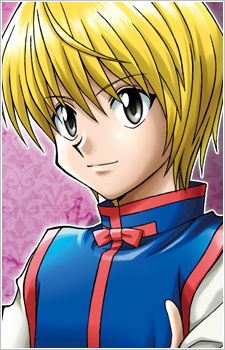
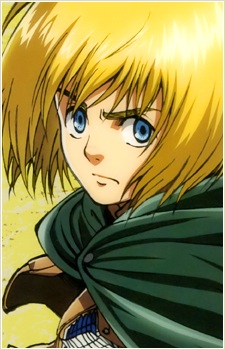 Maybe it's because they have similar hairstyles?? Anyways, to me they look similar and maybe that's why they're both some of my favorite characters?? Not sure... However, their personalities are very different. Though they're both bright, I'd compare Kurapika as more of a kinder (and better) version of Sasuke from Naruto. Kurapika seems darker (personality wise) than Armin (though I haven't read the manga of AoT nor finished the anime of HxH 2011). Armin is great and cares about his friends just like Kurapika does, and both of them are willing to risk their lives to help achieve their goals.
Maybe it's because they have similar hairstyles?? Anyways, to me they look similar and maybe that's why they're both some of my favorite characters?? Not sure... However, their personalities are very different. Though they're both bright, I'd compare Kurapika as more of a kinder (and better) version of Sasuke from Naruto. Kurapika seems darker (personality wise) than Armin (though I haven't read the manga of AoT nor finished the anime of HxH 2011). Armin is great and cares about his friends just like Kurapika does, and both of them are willing to risk their lives to help achieve their goals.
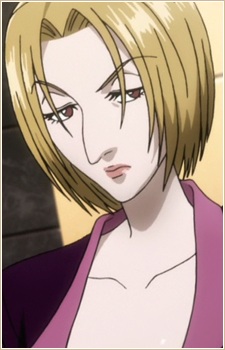
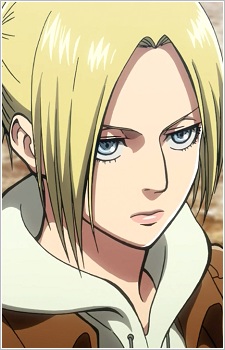 I think it's the nose and hair color that made me think they were similar?? Both also play as antagonists in their respected anime.
I think it's the nose and hair color that made me think they were similar?? Both also play as antagonists in their respected anime.
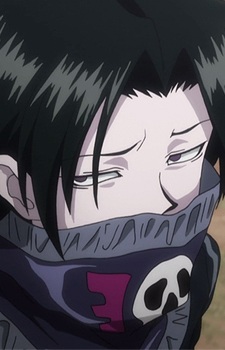
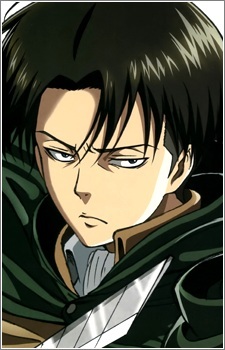 Both of them have similar eyes and hair, at least to me. They're also both fast fighters who fight well.
Both of them have similar eyes and hair, at least to me. They're also both fast fighters who fight well.